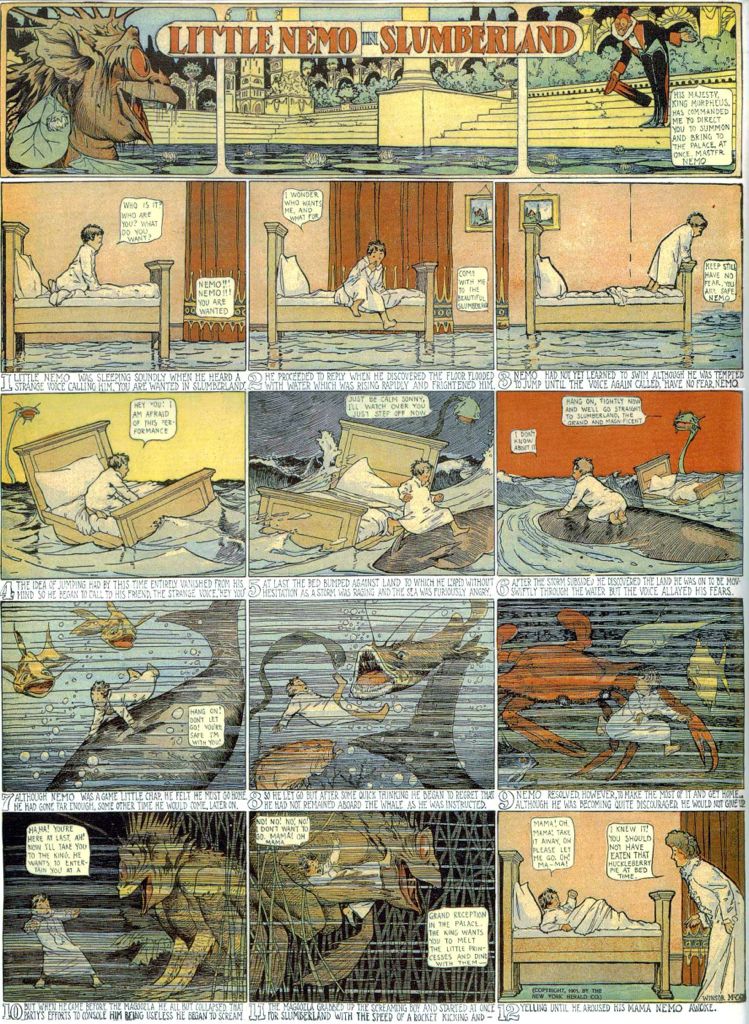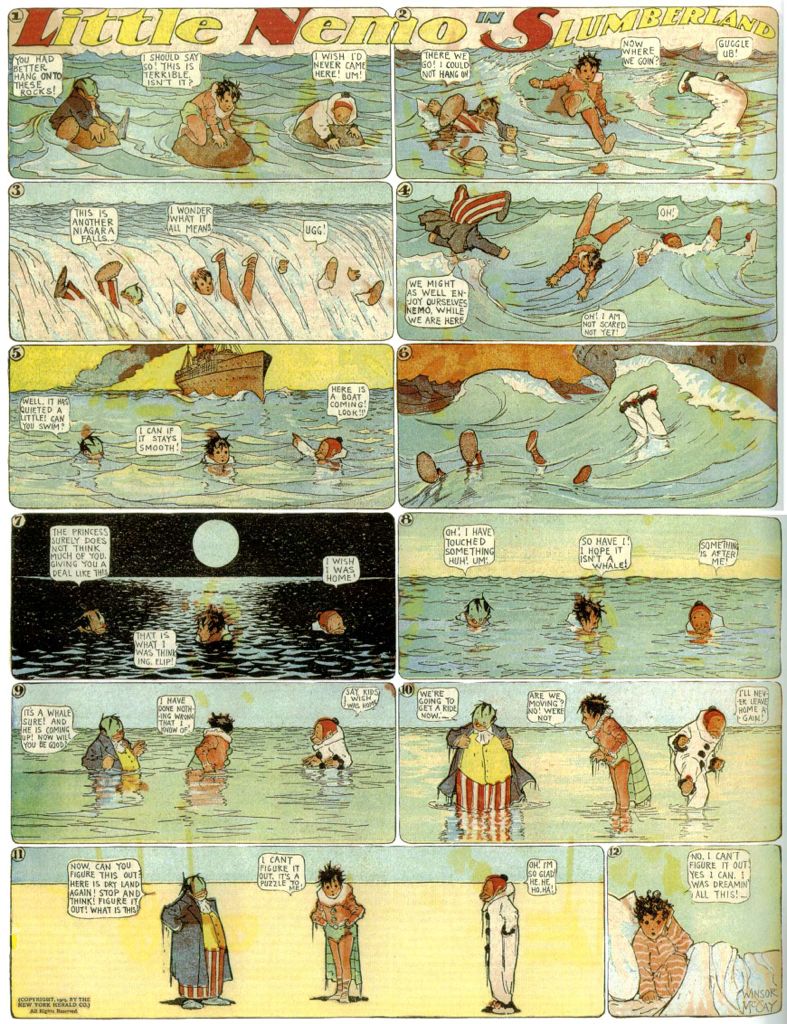Magnificent is the word that comes to mind when describing Winsor McCay’s comic strip panels. He created impeccably detailed images with great depth recording wildly imaginative visions of a fantasy world as delightful and transporting as any in the history of art.
As a strip, Little Nemo is whimsical rather than funny. The action takes place within the individual panels, not in their sequences — the visual storytelling is thus not dynamic in the cinematic style of most great comic strips. For the most part we move from panel to panel as through they were linked by cinematic dissolves from one tableau to the next — but the tableaux can take your breath away.
They work as renditions of seductive dream spaces, that invite you to enter them physically, and also as graphic designs of great sophistication and elegance. Their aesthetic appeal is inexhaustible, even if you prefer strips with more narrative momentum.
They need to be seen in large-scale reproductions in order to be fully appreciated and relished. (The scans reproduced here don’t even begin to do them justice.) Fortunately Sunday Press Books has published two of its gargantuan volumes presenting selections of the Sunday strips in the size of actual newspaper pages, as they first appeared, and Taschen Books has published a somewhat smaller but still enormous single volume collecting all the Sunday pages.
Together they document one of the supreme achievements of visual art in America.
Click on the images to enlarge.



I can’t actually explain why, Lloyd, but I’ve always thought there was something intrinsically ‘French’ about Little Nemo.
Well, the strip originated in the era of Art Nouveau and shows the influence of it at times, with similarities especially to the graphic art of Alphonse Mucha. Art Nouveau was an international style, but one does tend to associate it with France — Mucha, for example, was Czech but worked primarily in Paris.